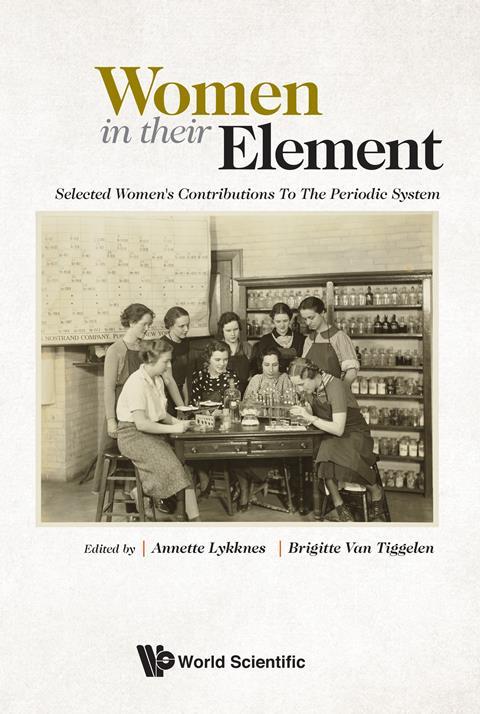Edited by Annette Lykknes and Brigitte Van Tiggelen
World Scientific Publishing
2019 | 556pp | £40
ISBN 9789811207686

The International Year of the Periodic Table has been marked in 2019 with many articles, events and celebrations including Women in Their Element from the European Chemical Society working party on the history of chemistry. The editors have taken this opportunity to correct omissions and biases still present in science that sideline women’s contributions and to emphasise the truly collaborative nature of discovery.
The chapters are broken up into roughly historical periods but also by topic, so contemporaries Clara Immerwahr, Marie Skłodowska Curie and Ida Freund are all in different sections. The introduction is the longest section of the book by far – 55 pages compared to an average of 10 pages each for the 38 essays. It also provides a thorough overview of the book’s contents, and helps to set the essays in context to each other and to broader historical events.
My favourite person to learn about was Alice Hamilton. Being the first female faculty member at Harvard University is a notable accomplishment in itself but that’s only a small part of her story, which includes creating the field of industrial medicine in the US, advocating for social reform and campaigning against leaded petrol as early as 1925.
While it was fascinating to learn about so many women and the ways they furthered knowledge of the periodic table, my biggest take-away from this book was the way it made me reflect on the nature of discovery and the narratives we create around it. It felt strange to read about brilliant scientists who were trying to work out the bizarre nature of water – a subject that is now taught in school.
The book does a great job of providing many examples that counter the idea of scientists as lone geniuses. But in some ways, it’s unfortunate that this book so strongly associates women with collaboration: the stereotype that women are naturally better at compromise and communication is part of the reason they carry more of the burden in collaborative workplaces and get less credit.
Women in Their Element is undeniably a work of scholarship with detailed research, substantial references and footnotes, and academics’ characteristic dry and detached style. At times, I found myself wishing for more narrative to bring to life the women and their stories, especially in the earliest sections, which rely on the sparsest records. Most of the essays felt similar in tone despite the wide range of authors. The academic nature of this book means it isn’t a casual read but it’s accessible enough for non-scientists who want to gain insight into the history of women and science.
No comments yet